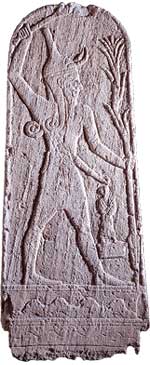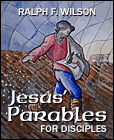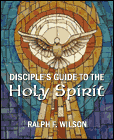Free E-Mail
Bible Studies
Beginning the Journey (for new Christians). en Español
Old Testament
Abraham
Jacob
Moses
Joshua
Gideon
David, Life of
Elijah
Psalms
Solomon
Songs of Ascent (Ps 120-135)
Isaiah
Advent/Messianic Scriptures
Daniel
Rebuild & Renew: Post-Exilic Books
Gospels
Christmas Incarnation
(Mt, Lk)
Sermon on the Mount
(Mt 5-7)
Mark
Luke's
Gospel
John's Gospel
7 Last Words of Christ
Parables
Jesus and the Kingdom
Resurrection
Apostle Peter
Acts
The Early Church
(Acts 1-12)
Apostle Paul
(Acts 12-28)
Paul's Epistles
Christ Powered Life (Rom 5-8)
1 Corinthians
2 Corinthians
Galatians
Ephesians
Vision for Church
(Eph)
Philippians
Colossians,
Philemon
1
& 2 Thessalonians
1 & 2 Timothy,
Titus
General Epistles
Hebrews
James
1 Peter
2 Peter, Jude
1, 2, and 3 John
Revelation
Revelation
Conquering Lamb of Revelation
Topical
Glorious Kingdom, The
Grace
Great Prayers
Holy Spirit, Disciple's Guide
Humility
Lamb of God
Listening for God's Voice
Lord's Supper
Names of God
Names of Jesus
Christian Art
About Us
Podcasts
Contact Us
Dr. Wilson's Books
Donations
Watercolors
Sitemap
 The 'Baal of Lightning' Stela (1900-1750 BC) from Ras Shamra |
"Detestable" is a strong word. An intolerant word that does not belong in the mouths of enlightened people. Or does it?
We live in an era where native religions are looked upon with respect and interest, almost with longing. Native American religion is the current fad in the US, while in Britain there is a renewed interest in the religion of the ancient Druids. One question that is not asked very loudly is, "What does the true God think of these religions?" Scripture indicates that God takes false religions with extreme seriousness, since they pose a great threat to the purity of his people's faith.
In this brief article, we conduct the most cursory of surveys of Canaanite religious practices. This is not to say that there was only one religion in Canaan. Since Canaan was populated by a conglomeration of many immigrant peoples, there were many variations and some local deities, not to mention the many gods worshipped in Egypt. Dagon was worshipped by the Philistines. Chemosh, Milkom, and Molech are probably different names for the same god worshipped by the Ammonites which involved child sacrifice.
Baal and Ashtoreth
The chief Canaanite fertility gods, however, were Baal and Ashtoreth.
- Baal (the son of El) was revered as the god with power over rain, wind, clouds, and therefore over fertility.
- Ashtoreth was a Semite goddess derived from the Babylonian god Ishtar. As worshipped locally in Canaan, she was the consort of Baal, and supposedly brought fertility to the people who worshipped her.
While temples are occasionally mentioned, Canaanite worship often took place in open-air sites at the tops of hills, referred to in the Bible as "high places." Usually, there was a masseba or stone pillar erected as a symbol of the male deity and an asherah representing the female counterpart, some sort of wooden pole or image of the goddess. In front of these was a sacrificial altar.
Cult Prostitution
Craigie and Wilson describe some of the worship:
"Characteristic of Canaanite fertility ritual is the association of male and female 'holy ones' (cult prostitutes) with temples and shrines of the fertility deities. By joining in the activities of cultic sexuality, common people could participate in 'stockpiling' fertility energy, which ensured the continuing stability of agricultural as well as human and animal productivity.
Archeological excavations in Canaanite locations have uncovered temples with chambers where sexual activity took place. Also, many iconographic representations of the fertility goddess with exaggerated sexual features have been discovered. The influence of the fertility cult was widespread; it was combated fiercely in Israel as alien to the covenant faith (e.g. Hosea 1-3)."[72]
But an even greater danger than the detestable practices of Canaanite religion were the assumptions that underlay them, which were diametrically opposed to the worship of Yahweh. We need to consider carefully how the worship of the true God differed.
Monotheism
We take monotheism, the worship of one God, for granted. But the Israelites lived in a culture, both in Egypt and now in Canaan, where many gods were worshipped. The First Commandment was clear: "You shall have no other gods before me" (Exodus 20:3). The great saying of Israel, the Shema, became its hallmark and identifying feature down through the centuries, even quoted by Jesus (Mark 12:29):
"Hear, O Israel: The LORD our God, the LORD is one. Love the LORD your God with all your heart and with all your soul and with all your strength." (Deuteronomy 6:4-5)
The Christian understanding of the Trinity is also monotheistic. We believe in a tri-unity, "God in three persons, blessed Trinity."[73]
But Canaanite religion challenged this monotheism, and Israel was constantly tempted to worship additional gods for added "insurance" against bad crops or infertility of herds.
Idolatry
Another earmark of the worship of Yahweh was that He was invisible. Paul's doxology in 1 Timothy summarizes this unique understanding of the true God:
"Now unto the King eternal, immortal, invisible, the only wise God, be honor and glory for ever and ever. Amen." (1 Timothy 1:17, KJV)
Even though various prophets have had visions of God, the Apostle John explains,
"No one has ever seen God, but God the One and Only, who is at the Father's side, has made him known." (John 1:18)
He, Jesus, lives in glory -- glory so unapproachable that Moses could not see God's face but only his backside (Exodus 33:20-23), and speaking to him left a glow on Moses' face (Exodus 34:29).
Though God is spoken of in various places in Scripture as having human attributes -- the hand of God, the arm of the Lord -- these are figurative, anthropomorphisms, just as is the reference to him sheltering his people under his wings (Psalm 91:4). According to Jesus, God is spirit, not flesh (John 4:24) and must be worshipped that way. The miracle of the Incarnation is that "The Word was made flesh, and dwelt among us, and we beheld his glory, the glory as of the only begotten of the Father, full of grace and truth" (John 1:14).
Failure to understand the invisibility and immortality of God is serious. In our day, Mormons misunderstand this. They teach that God the Father had a body just like us. Their God is intensely physical.
What does this have to do with idolatry? Idolatry stems from a basic misunderstanding of the immortal and invisible spirit-nature of God. It tries to depict God in a physical way so he can be visualized and worshipped concretely. In the Ten Commandments, God gave very specific commands against this:
"Thou shalt not make unto thee any graven image, or any likeness of any thing that is in heaven above, or that is in the earth beneath, or that is in the water under the earth." (Exodus 20:4; KJV)
The Tabernacle in the Wilderness had no physical God in its "Holy of Holies," only an ark, which represented his throne. The absence of an image on this throne was a telling reminder that the true God transcended a desert tent. Even Solomon, when dedicating the glorious temple in Jerusalem, prayed,
"The heavens, even the highest heaven, cannot contain You. How much less this temple I have built!" (1 Kings 8:27)
In their reforming zeal, the Radical Protestants stripped sanctuaries of any kind of decoration. They feared that the Catholic images of the saints had become idols to be worshipped in and of themselves. Catholic theologians counter that the Church has always taught that these images are not to be worshipped, but to serve as reminders.
Nevertheless, there is always the danger that we will try to concretize God into an image or icon or statuette that we can venerate. That is what Israel's neighbors were doing with their household idols and the statues of their gods at their high places. And this danger of idolatry is always a threat to a true understanding of God.
"Now unto the King eternal, immortal, invisible, the only wise God, be honor and glory for ever and ever. Amen." (1 Timothy 1:17, KJV)
Detestable
While we may be magnanimous and tolerant, the very survival of the people of Israel depended upon them being intolerant of the religions around them. Most of us in the Western world live in pluralistic societies that are governed as a democracy, where the majority rules.
We cannot understand ancient Israel unless we understand it as a completely different kind of nation, a theocracy ruled by a king -- God himself (and through human kings who are to rule on God's behalf). A theocracy cannot tolerate other religions any more than a democracy can tolerate organizations whose aim is the violent overthrow of the constituted government. If we tolerate subversives and traitors to our government, we sow the seeds of the destruction of our way of life. Treason against the king in a theocracy is worship of another king or god, and cannot be tolerated.
The Bible refers to these false gods as detestable. God, through Moses, commanded them,
"Completely destroy them -- the Hittites, Amorites, Canaanites, Perizzites, Hivites and Jebusites -- as the LORD your God has commanded you. Otherwise, they will teach you to follow all the detestable things they do in worshiping their gods, and you will sin against the LORD your God." (Deuteronomy. 20:17-18)[74]
The beliefs and practices of the Canaanites were not only detestable, but they also defiled and degraded the people who practiced them. After a list of sexual sins, God commands the Israelites in Leviticus:
"Do not defile yourselves in any of these ways, because this is how the nations that I am going to drive out before you became defiled. Even the land was defiled; so I punished it for its sin, and the land vomited out its inhabitants. But you must keep my decrees and my laws. The native-born and the aliens living among you must not do any of these detestable things, for all these things were done by the people who lived in the land before you, and the land became defiled. And if you defile the land, it will vomit you out as it vomited out the nations that were before you." (Leviticus 18:24-28)
Summary
If these religions were allowed to continue side by side with the worship of Yahweh, they would corrupt the true faith through syncretism, which is "the combination of different forms of belief or practice." Unfortunately, the Israelites did tolerate the religion of the Canaanites, allowed it to continue, and it did prove deadly to the true faith of Israel.

Lessons in book formats are available. |
As his final declaration to the Israelites before his death, Joshua gathered them together at Shechem and called them back to the true faith:
"Now fear the LORD and serve him with all faithfulness. Throw away the gods your forefathers worshiped beyond the River and in Egypt, and serve the LORD. But if serving the LORD seems undesirable to you, then choose for yourselves this day whom you will serve, whether the gods your forefathers served beyond the River, or the gods of the Amorites, in whose land you are living. But as for me and my household, we will serve the LORD." (Joshua 24:14-15)[75]
Endnotes
[72] P.C. Craigie and G.H. Wilson, ISBE 4:100.
[73] See my article "Four Reasons Why I Believe in the Trinity" (www.joyfulheart.com/scholar/trinity.htm).
[74] See also Genesis 15:16; 2 Kings 21:11; Ezra 9:1; 1 Kings 11:5-7; 1 Kings 14:24; 2 Kings 16:3; 2 Kings 23:13; 2 Chronicles 36:14; Ezra 9:11; Judges 10:6.
[75] References: D.M. Pratt, "Baal," in ISBE 1:377-379. P.C. Craigie and G.H. Wilson, "Religions: Canaanite," in ISBE 4:95-101. A.H. Sayce and K.G. Jung, "Ashtoreth," in ISBE 1:319-320.
Copyright © 2025, Ralph F. Wilson. <pastor![]() joyfulheart.com> All rights reserved. A single copy of this article is free. Do not put this on a website. See legal, copyright, and reprint information.
joyfulheart.com> All rights reserved. A single copy of this article is free. Do not put this on a website. See legal, copyright, and reprint information.
 |

|
In-depth Bible study books
You can purchase one of Dr. Wilson's complete Bible studies in PDF, Kindle, or paperback format -- currently 48 books in the JesusWalk Bible Study Series.
Old Testament
- Abraham, Faith of
- Jacob, Life of
- Moses the Reluctant Leader
- Joshua
- Gideon
- David, Life of
- Elijah
- Psalms
- Solomon
- Songs of Ascent (Psalms 120-134)
- Isaiah
- 28 Advent Scriptures (Messianic)
- Daniel
- Rebuild & Renew: Post-Exilic Books
Gospels
- Christmas Incarnation (Mt, Lk)
- Sermon on the Mount (Mt 5-7)
- Luke's Gospel
- John's Gospel
- Seven Last Words of Christ
- Parables
- Jesus and the Kingdom of God
- Resurrection and Easter Faith
- Apostle Peter
Acts
Pauline Epistles
- Romans 5-8 (Christ-Powered Life)
- 1 Corinthians
- 2 Corinthians
- Galatians
- Ephesians
- Philippians
- Colossians, Philemon
- 1 & 2 Thessalonians
- 1 &2 Timothy, Titus
General Epistles
Revelation
Topical

 To be notified about future articles, stories, and Bible studies, why don't you subscribe to our free newsletter, The Joyful Heart, by placing your e-mail address in the box below. We respect your
To be notified about future articles, stories, and Bible studies, why don't you subscribe to our free newsletter, The Joyful Heart, by placing your e-mail address in the box below. We respect your